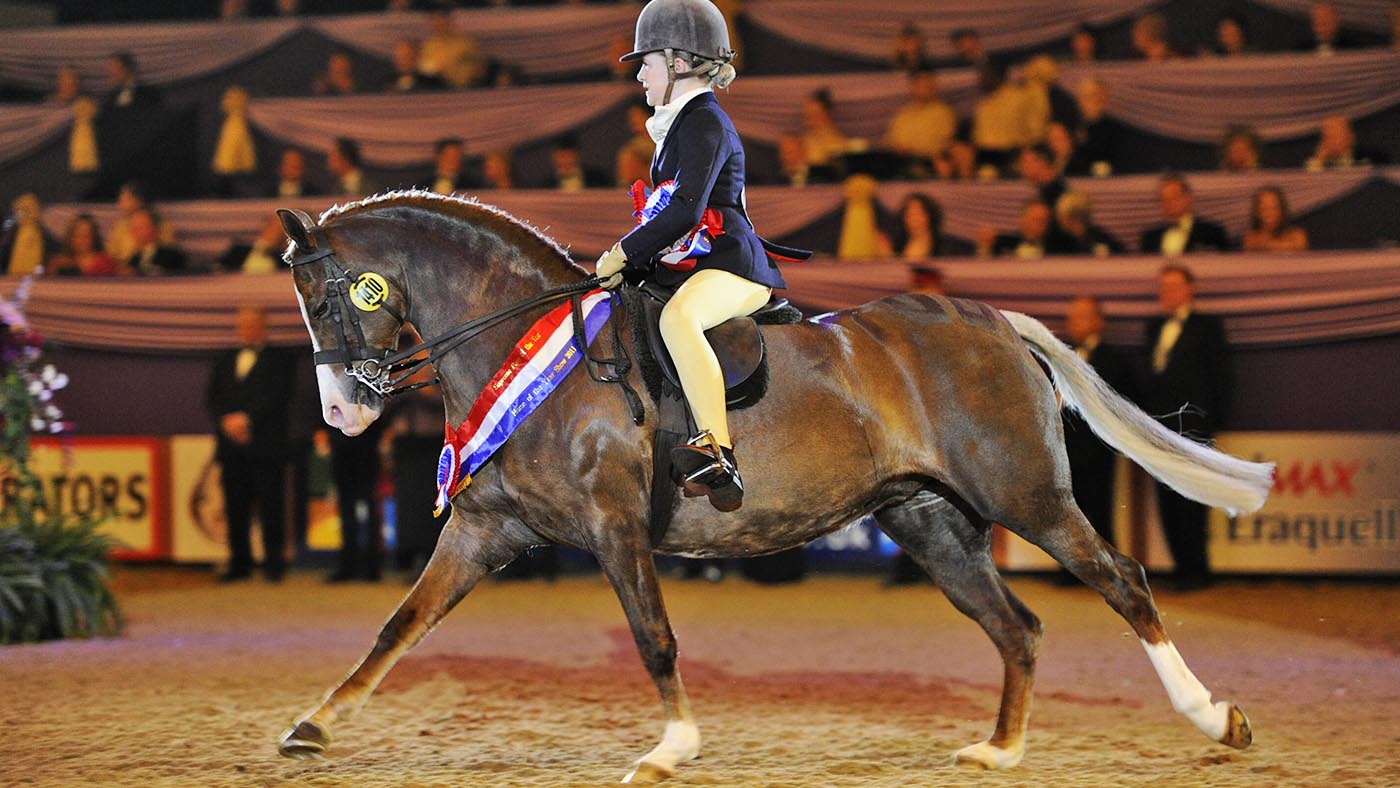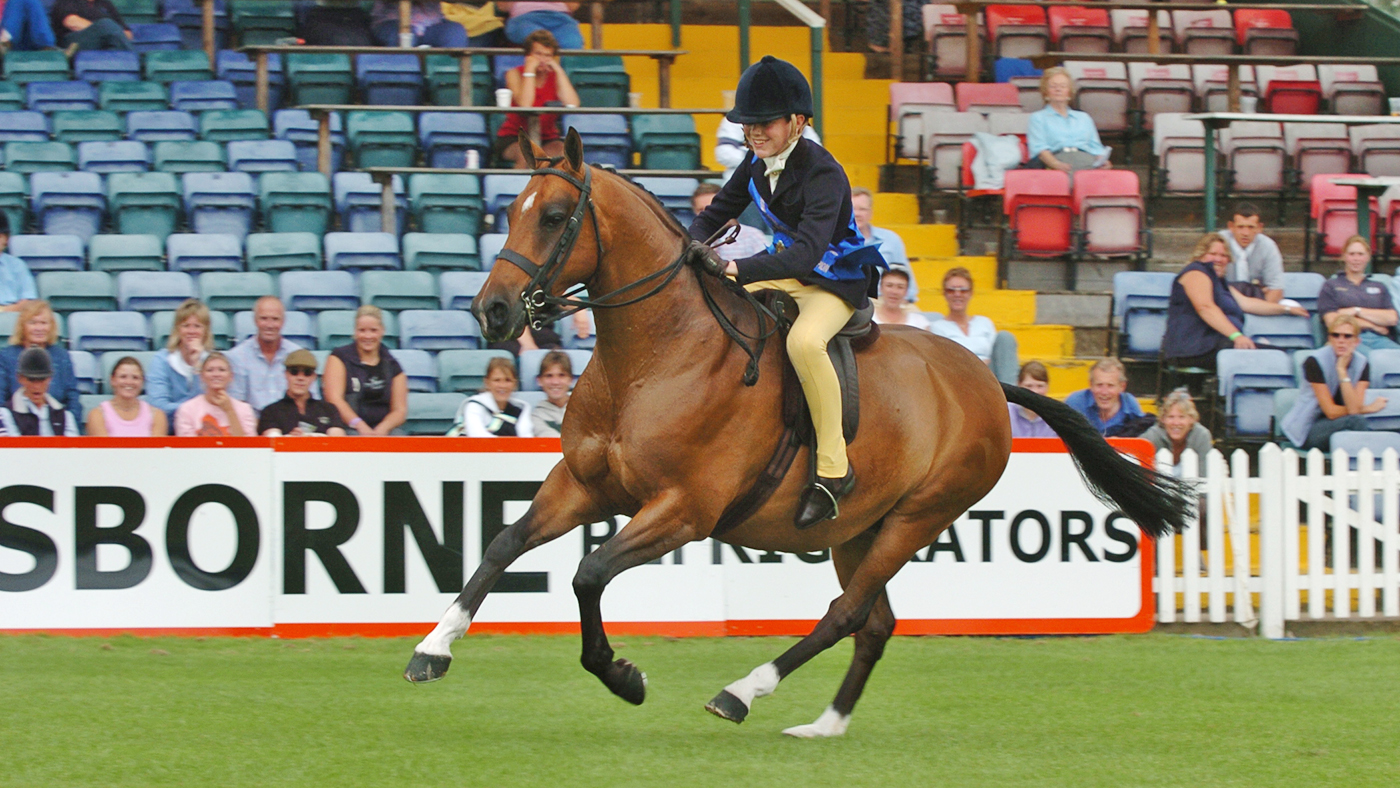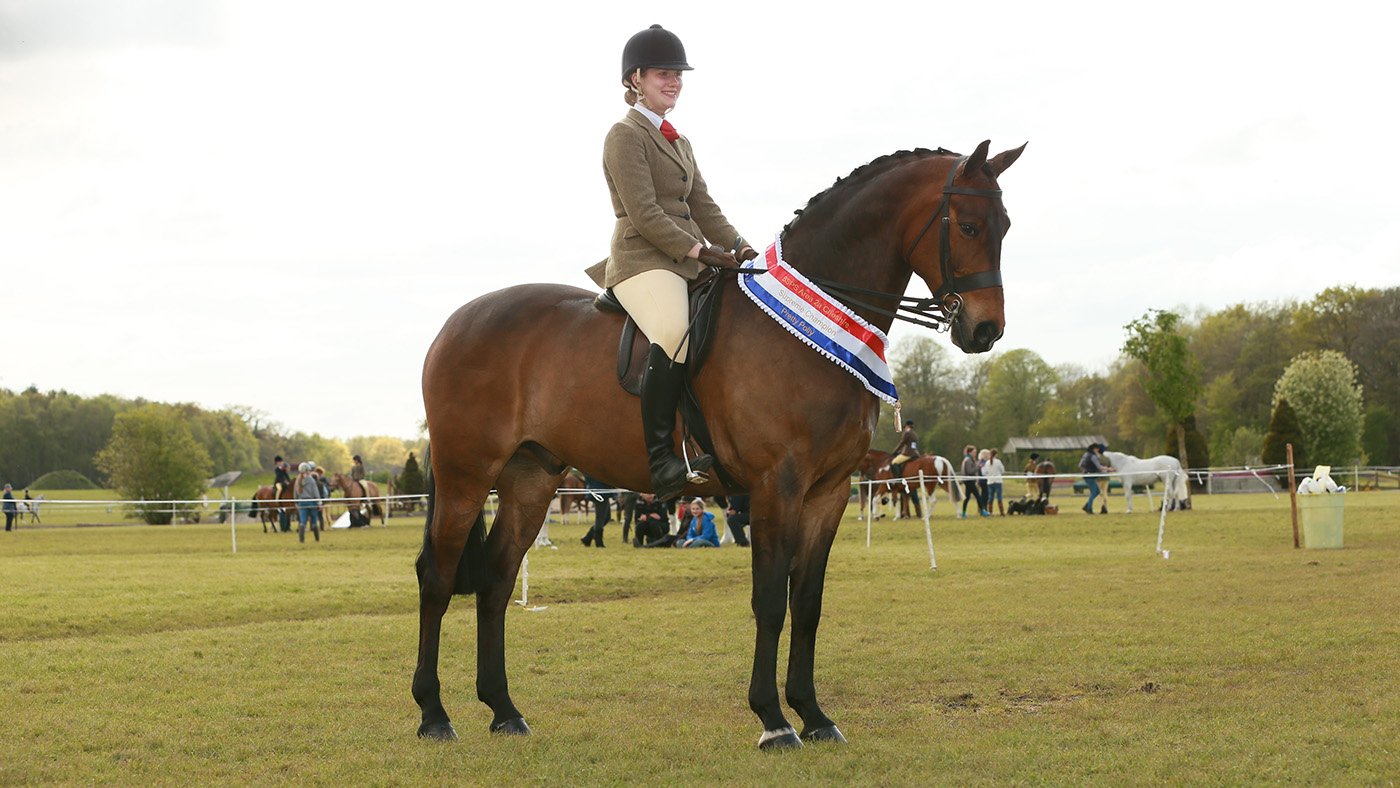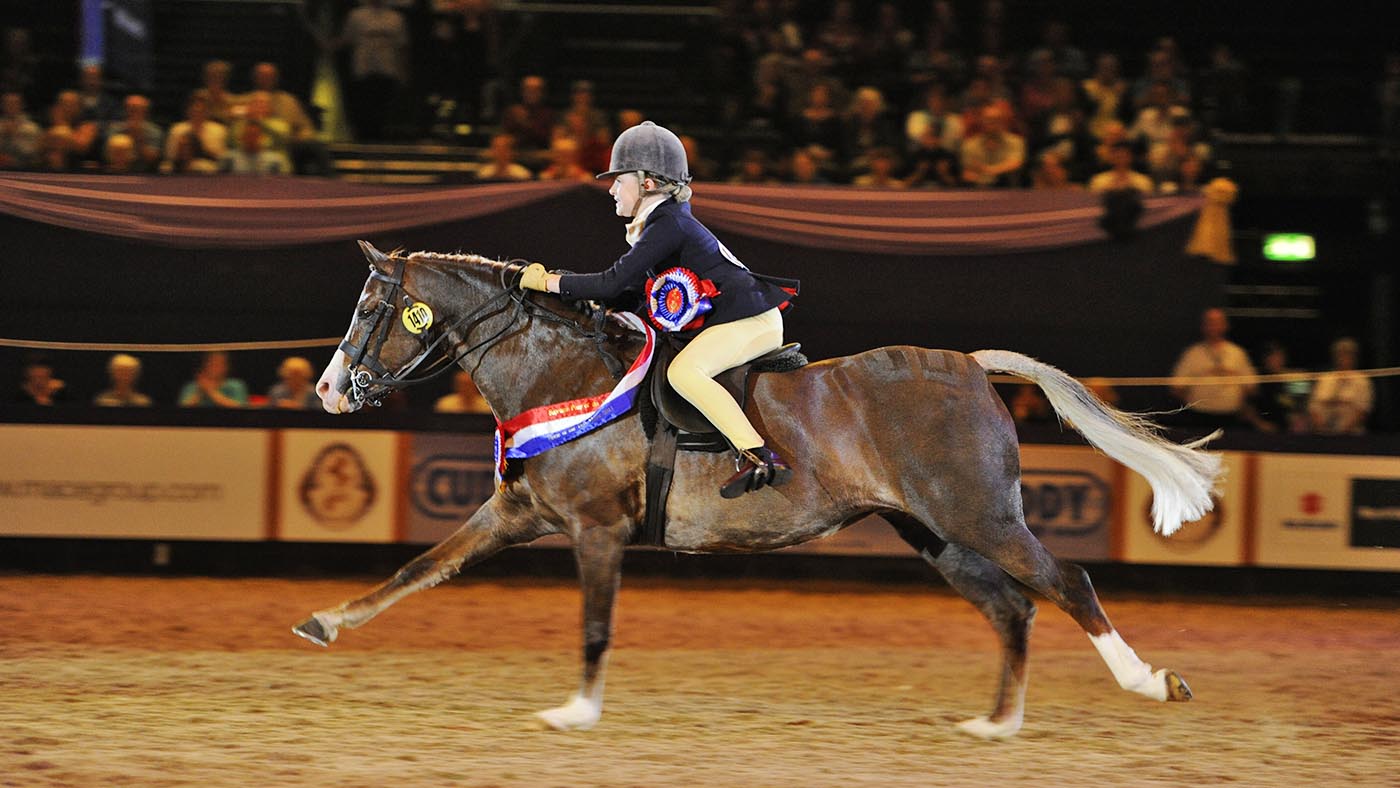Enjoy Horse & Hound’s comprehensive guide to help you spot the perfect show hunter pony and turn it out correctly, with top tips from expert judges on what they will – and won’t – accept...
One of the most popular children’s plaited showing sections is that for show hunter ponies (SHP), which gained their own specific category within the main governing organisation, the British Show Pony Society (BSPS), in 1983. Until then, children’s plaited classes had been for “riding ponies” — now show ponies — but after the “split”, two distinct types have emerged.
Whereas the modern show pony is elegant and refined, the SHP is sturdier, more workmanlike, should have more bone and must gallop. Many “family” ponies — often those with a dash of native blood — fit into this category well.
What do the judges look for?
Type is everything in SHP ranks and judge Jackie Beatham is a renowned stickler for it. “Put quite simply, the show hunter pony should resemble a scaled-down middleweight hunter,” she says. “It must definitely not be a 13hh or 14hh show pony covered in fat with a false topline.
“Summed up, it should be a four-square pony with scope combined with quality.
“I like a pony that catches my eye when it walks in from the collecting ring, looking through its bridle with an expression on its face saying it wants to get the job done; in short, it’s enjoying its work.
“It should have the desire to go forward ‘on the edge’ with presence, but still maintaining its manners. It should go in a slightly more ‘open’ outline than its show pony cousin, and the action should be free and loose — the daisy-cutting show pony movement should be discouraged.
“The pony and rider should also appear in harmony.”

Crystal Vision ridden by Harriet Dennison
Fellow judge David Machin agrees on all counts. “The first thing I ask myself is, ‘Is it a hunter?’” he says. “My ideal SHP would be one which if blown up to 17hh, would be able to carry me across country and that I think I would like to ride.”
He, like Jackie, forms a preliminary opinion early on in a class. “I usually find my winner when the ponies enter the ring,” he says. “It tends to be the one full of quality and presence, with a walk that is long, free and swinging, with its ears cocked forward and looking where it is going. You often find that the pony that walks the best is also a good galloper and is usually a comfortable ride.
“I like to see the action long, low and level in trot, and not landing with the heel down first.
“When cantering, the pony should never look in a hurry — each stride should be long and cover as much ground as possible. The pony should not be sharp — it should look relaxed at all times, but not boring.”
Unlike show ponies, show hunter ponies are expected to gallop. “This is an essential part,” adds David. “The pony should truly lower and lengthen — not just go faster.
“I always ask for a good gallop — not just an extension — down the long side, but sometimes, I barely get a strong canter!”

Chiddock Over The Limit preparing to gallop at the Royal International Horse Show
What does a conformation judge look for?
“I always like to start at the head,” says David. “I look for a big, bold, dark eye with ears not too big or too small, a stronger type of head than in the show pony classes, but never common or coarse.
“I love to see a pony with plenty of front, with a big sloping shoulder and a neck with a good topline — not upside-down or swan-necked — a good wither and somewhere to put the saddle. The pony should be strong and deep through the girth and deep behind the saddle, so not herring-gutted.
“The hindquarters should be strong, big and round. The front legs should have a good forearm with a big, flat knee and when viewed from the front, the knees should not be offset. The cannon bones should be short and be strong enough to carry the animal.
“The hindlegs should have a good, strong thigh and a second thigh leading down to strong hocks, close to the ground with no hint of sickleness or curbs. The fetlocks and pasterns should be clean with no signs of wear and tear — such as windgalls etc — and the slope of the pasterns should be the same as the hoof, keeping the pony in balance.
“The last thing I do when assessing conformation is to stand behind the pony and look for any signs of dropped hips. The line over its quarters should be perfectly symmetrical. When walking away from you, the pony must move straight and true — no dishing or plaiting. The whole picture should be workmanlike, but still full of quality with no signs of commonness.”

Louvaine Rooney is widely regarded as an excellent stamp of show hunter pony.
Jackie agrees. “The pony should be deep through the girth, short-coupled, with a lovely sloping shoulder and a great length of rein — and most importantly, good limbs,” she says. “This means short cannon bones and a plethora of flat bone, plus an active, strong hindleg which is essential to create the power to cross any country.
“It should have four well-matched hard feet on pasterns that are neither too upright nor too sloping.”
Top tips for a winning performance
“For the gallop, I like to see the ponies start to wind up round the first corner, increasing in speed as they extend along the long side, in order to be at their best as they come past me,” says David. “Then, they should gradually slow back down to canter.
“Give yourself plenty of room when you enter the ring so the judge can see you. It is hard in big classes but you should still try.
“Also, if a judge asks you for a certain show, don’t do a different one.

Crystal Vision showing off his length of stride.
Jackie advises: “On the ‘go-round’, try to create space by using the corners of the ring and if need be, decreasing the pace along the back so that when you pass the judge, you present a picture of balance and presence, looking as if you have all the time in the world. The judge cannot see you if you are in a crowded group, so be aware of those around you.
“I advise riders to go and watch the open show hunter classes at a big show, and see how the professionals do it — it will not be time wasted.
“In the gallop, always gradually increase the pace on the short side — do not fire off the corner. Also, make sure the gallop is maintained right past the judge, coming back politely through the paces to a good halt and salute.
“Know your pony’s strong points and make the best use of them.”
Jackie’s ‘must-haves’
- A pony with a great walk
- Rider and pony looking as though they are enjoying their class
- A proper gallop
- A pony that suggests to me he is the winner the moment he enters the ring
Judges’ pet hates
David says: “I hate to see ponies held up until they are almost in front of me, and then the rider suddenly let go and scramble into a gallop from an almost standing start! This only results in the ponies anticipating and becoming hotter and hotter.
“Also, overweight animals or ponies without sufficient limb; plus there is no need to put make-up on ponies — if the animal is well inside, it will look good outside. There is nothing to beat good feeding.
“I don’t like to see children who ride with the handbrake on when the pony just wants to please and is not being naughty.
“A lack of limb and/or being back at the knee isn’t acceptable — after all, there is enough strain on the tendons already, and this just causes more problems. I also dislike short, stubby pasterns.”
Jackie says: “I don’t want to see an overbent pony in a fixed outline, sitting behind the contact or a pony that is carrying too much weight. Riders who are trotting too fast will result in loss of cadence and trailing hocks. Equally ponies being constantly kicked and nagged along, going behind the leg is a no-no.
“I don’t like to see a foreleg with which you are unable to drop a plumb line through the centre of the knee, pastern and foot.”
Issues that our judges can forgive…
David says: “If a really nice animal happens to go on the wrong leg, but the child corrects it straightaway, I would forgive that if I like everything else about it.
“I will forgive a SHP having a ‘pretty’ head if everything else is workmanlike and the pony goes well.
“I can also accept a pony that is slightly over at the knee.”
Jackie agrees with David’s first point: “Sometimes as judges — and to a certain extent exhibitors — there is too much emphasis put on a wrong strike-off in an otherwise good show, with the pony going in a lovely, supple and correct way. A wrong strike-off can often be a rider error or a momentary lapse in concentration on the pony’s part, so as long as it is corrected without fuss the pony would lose very few marks with me. You can always correct a wrong strike-off, but a bad hindleg will always be there tomorrow!”
Expert turnout tips
Jackie says: “Turnout for the SHP should present a pony fit for purpose, with a gleaming coat achieved through correct feeding and strapping, and a rider in tweed — coloured scrunchies and buttonholes are a ‘no-no’ for me. Sometimes, less is more.
“I cannot stand the over-use of makeup and oil,” she says. “I also hate the trend for ‘micro-plaits’ — they are incorrect turnout.”
David says: “I dislike seeing children in jackets that are too short and dressage boots with curved tops. The kit should be smart but not fancy, and be suitable to hunt in. If they want to take examples they should look at Jayne Webber and Robert Walker who are always immaculate, but could easily go straight to the meet.
“I like to see the ponies’ tails well-pulled and cut off short, level with their hocks.”
Who can compete in show hunter pony classes?
Show hunter ponies compete in five size categories: 122cm (12hh); 133cm (13hh); 143cm (14hh), 153cm (15hh) and intermediates — over 148cm and under 158cm; each class carries upper age restrictions on riders.
In addition, there are sections for lead rein of hunter type (LRHT) and first pony, both for animals 122cm or under. These correspond to similar classes for show ponies, but the LRHT class features obstacles such as flags, gates, poles on the ground and other “hazards” which leader and pony must negotiate safely.

Lead rein of show hunter type: Priestwood Roc Star ridden by Georgie Grace and led by John Harvey
Most SHP classes are run under the auspices of the BSPS, which has novice, restricted and open classes leading to prestigious finals at summer and winter championships, in addition to open Horse of the Year Show (HOYS) and both open and home-produced (Pretty Polly) Royal International (RIHS) qualifiers. Other societies, including Ponies (UK), National Pony Society (NPS) and The Showing Register (TSR), also have a range of SHP classes leading to their own separate finals.
You may also be interested in…

Horse & Hound’s definitive guide to show pony classes *H&H Plus*

Working hunter pony classes: judges’ tips on how to win *H&H Plus
Horse & Hound asks working hunter pony judges for their expert tips on how to produce a winning performance and


